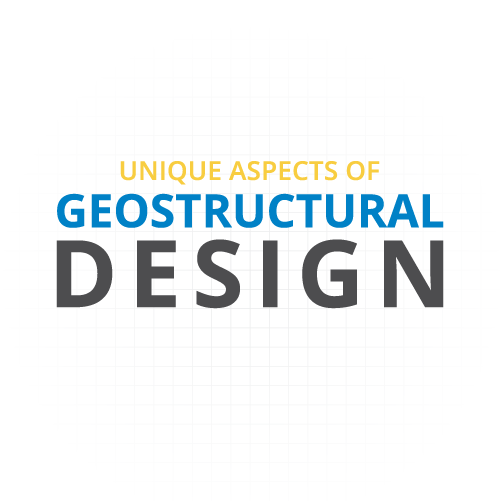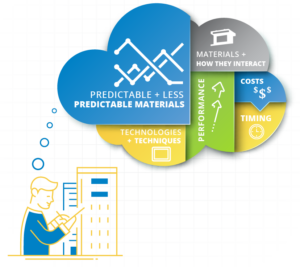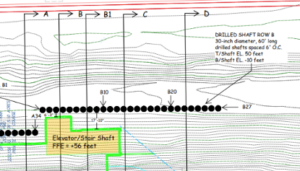|
Geostructural design projects present a unique set of challenges relative to other facets of geotechnical engineering and other engineering disciplines as a whole. Materials and how they interact; project cost, performance and timing and the technologies and techniques applied must be considered to manage potential risks. COMBINING THE YIELDING WITH THE UNYIELDING Inherently, geostructural design operates at the intersection of the predictable (structural design principles and predictable materials) and the |
|
The majority of traditional structural systems (building walls, foundations) are designed with the assumption that the system is generally rigid and deflections will be minor, at best. However, geostructural design must accommodate the movement inherent in geotechnical systems and combine it with the movement allowable in structural systems.
Many performance issues arising from geostructural designs can be tied back to a lack of communication or understanding of this required balance between the geotechnical and structural aspects of the system.
NOBODY WANTS TO PAY FOR IT TWICE . . . OR MORE
|
|
Geostructural systems provide support for overlying and adjacent site and building features. |
During construction
Generally, if an issue is identified during construction, remediation will be expensive. Repairing such systems often involves removal of overlying and adjacent construction and/or limited-access remediation measures.
Post-construction
If an issue is identified post-construction, the financial impacts are exponentially greater. Geostructural engineers have one chance to get the foundation design right.
Projects may be solved using an array of geostructural techniques. Each technique has cost and performance implications which must be balanced using engineering and construction experience and a thorough understanding of the project’s performance requirements. Failure to match the technique to the site restrictions and performance expectations can result in costly construction-phase overruns.
UNDERSTANDING THE BEST USE OF ALL TOOLS IN THE TOOLBOXThe wide array of techniques and technologies available to solve geostructural problems is both a blessing and a curse. The suitability of a particular approach is not always tied clearly to its economy. Geostructural designers must have a construction mindset and a thorough knowledge of the limitations of products and techniques from both a performance and cost/constructability perspective. Designs that perform well on paper may be un-constructable. Highly constructable options may fail to meet performance expectations. A well-rounded geostructural designer has the experience to balance design, constructability, equipment installation and to meet performance requirements to provide the client with a balanced solution. |
Additional resources
This is part two in a series about geostructural design. Keep reading for more information:
About the experts
Karl Higgins, PE, D.GE, earned a bachelor’s and master’s in engineering with a focus on geotechnical engineering.
Doug Chappell, PE, has a bachelor’s degree in mining engineering with experience in consulting and design-build specialty contracting.
Combined, they have more than 60 years of experience. Together, Doug and Karl lead the Geostructural design practice at ECS.
Contact us to discuss your geostructural design needs.



